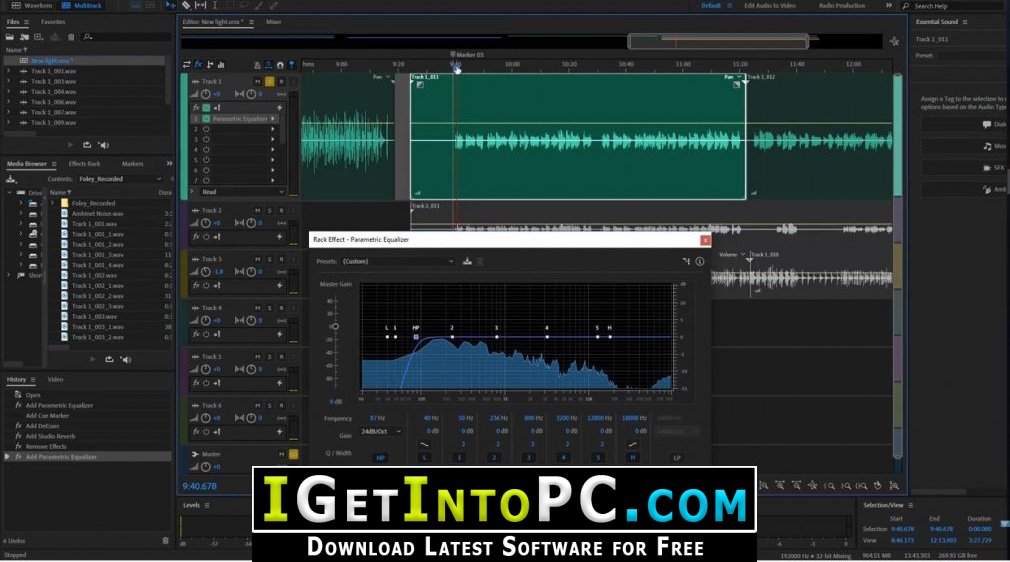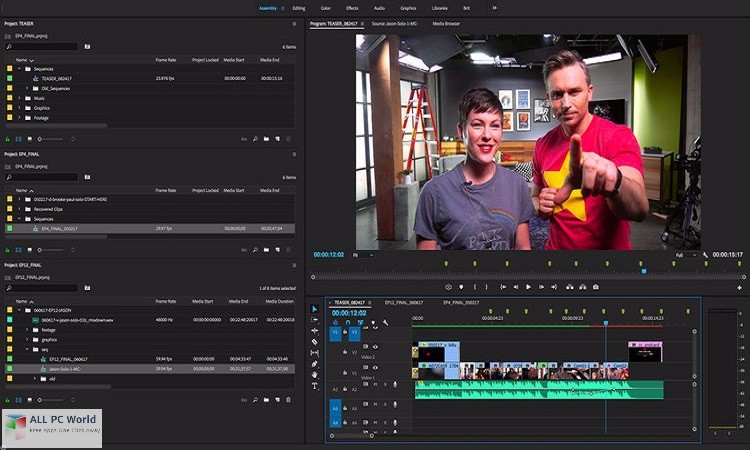
- HOW TO USE ADOBE AUDITION CC SOFTWARE
- HOW TO USE ADOBE AUDITION CC PROFESSIONAL
- HOW TO USE ADOBE AUDITION CC MAC
I do NOT check Export these are WAV files for editing. I run each of these initial recordings immediately through Match Loudness, with three steps:įirst, with the I TU-R BS.1770-3 Loudness setting, with Target Loudness at -20, tolerance 0 LU, and Max True Peak Level at -3 dBTP, and check True Peak Limiting. I strongly advise against the home booth.
HOW TO USE ADOBE AUDITION CC PROFESSIONAL
This year we recorded in a professional booth, and that has made a lot of difference.
HOW TO USE ADOBE AUDITION CC MAC
Visualize a kindergartner driving a Mac Truck.

We THOUGHT we had a very quiet home booth built, but it was not - and I compounded the problems by trying noise reduction and other processors that I really did not understand. To add a bit of experience from learning the hard way: I went through an awful learning curve trying to do an audiobook last year and found that my problems all started with that recording environment. If you find though that you have to crank all the gain in (75dB) and you still aren't getting to -10dB then go ahead and use it - but it really will be better without it if you can! If you sit at the mic, and adjust the level so that it's giving a reasonable signal (let's say around -10dB so you have some headroom) and the Apogee gain control is set at around the 60dB mark, then you're good to go without it. If there's enough gain in the Apogee, all you are doing is adding a bit more front-end electronic noise, so potentially you could be making things worse with it, not better. Whether or not you need to use the Cloudlifter is debatable. If you work it close it sounds better, and you'll get a better SNR (improving the noise floor figure), but you'd have to be careful with breath noise, etc. It gets used a lot as a close-talking mic by radio jocks, etc and for some types of book content it would work fine. The SM7b is an 'interesting' choice of mic, though.
HOW TO USE ADOBE AUDITION CC SOFTWARE
I should point out that this is the sort of job that Audition is ideal for - you won't find any better software for it, wherever you look. Once you've done this, then you re-normalize to -3dB, and the level of the entire file will be raised, as will your RMS figure when you re-measure it.

In the case of my file, I'd have to squash the peaks by about 4-5dB using either the Dynamics Processor, or one of the other compressors available (there are two more) to get to your desired figure. Don't do this until you've made an initial measurement when you have, you'll have a reasonable idea of how much peak compression to apply. The trick for getting it right is to note that you can't increase the amplitude of the file without going over -3dB, and that you have to achieve your goal by altering something about the peak to RMS value. You'll see that for this file (which is a speech file) it's almost where you'd want yours to be. I've highlighted and pointed out the line you need to look at. At this point, you need to look at the Amplitude Statistics, and scan your file.

The easy bit, as you've figured out, is getting the peak level correct - you normalize to -3dB.

Once you've got your recording, with its nice low noise floor, in the can the rest is pretty straightforward, except that there are several possible ways to get at it. This is all fairly straightforward Audition can manage this easily, but your first requirement isn't actually an Audition issue at all - this is determined by your recording environment, and to get a -60dB noise floor, you're going to have to have to create or use a quiet environment to record in, or you have to resort to a bit of trickery with Noise Reduction, which quite frankly is best avoided.


 0 kommentar(er)
0 kommentar(er)
